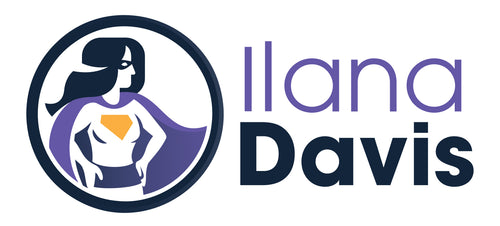3 important metrics for your Shopify store
Published: August 20, 2020
I’m a huge data nerd and that’s no secret.
Measuring success for both my business and clients is important to how we make decisions. If I don’t know where I was, how do I know that what I’m doing is working? Knowing which metrics to use, isn’t so easy.
Following the wrong metrics could send you down a rabbit hole of wasted time and money.
Following the right metrics could propel your business to new growth.
Right vs Wrong Metrics
Which metrics are right? Which metrics are wrong?
The unfortunate answer is that it depends. I know. The dreaded it depends.
Setting goals helps you to determine which metrics to focus on. The issue with metrics is that some are vanity metrics to make you feel good. Others move the needle. Make sure you’re setting goals that fit your business.
For many merchants I work with, their goals are usually one of two things. Increase sales and/or increase conversions.
Metrics beyond sales and conversions
I do actually measure both total sales and conversion rates. But they only focus on the end result. It’s also important to focus on what comes before.
The following metrics are what I use most often to measure success in sales and conversions.
Organic Search
If your conversion rate is low, it could be because you’re sending poor traffic to your site. When you run ads, most likely you’ll see a large uptick in paid search traffic. Great! Mission accomplished. Right?
Not so fast. I can send thousands of people to my website but if they are the wrong people, they aren’t going to buy. This drives my conversion rate right to the ground. When running paid ads, make sure your targeting the right people otherwise you’ll fall into this trap time and time again.
Organic search is more valuable than paid search. Likely an unpopular opinion but oh well. Organic search is directly tied to your SEO efforts. If you’re not spending time on SEO at least quarterly, you should be.
Organic search should be around half of your total traffic.
Bounce Rate
Visitors who come to your site and then leave without looking at other pages have bounced from your site. It’s the equivalent of a sidewalk sale where a customer picks up one item, puts it back down, and walks away without looking at anything else on your table.
When a visitor bounces, it could mean the call to action on the visited page wasn’t strong enough. It could also mean they found you by mistake but let’s assume that’s not the case. High bounce rates are most common on blog pages for example because they often lack a strong call to action. You’ll also see this on your homepage and product pages, especially if you’re targeting the wrong people.
Bounce rates below 60% are good with a target of between 20-45% for e-commerce sites to be great.
Abandoned Cart Rate
We all love to shop around and find a good deal or only buy from trusted companies. I’m notorious for ‘walking’ around the store, holding on to something I may buy. Only to put it back right before I leave the store because I wasn’t convinced to buy. Lots of people do this. The trick is to understand why they abandon their carts.
Make sure you’re following up with an abandoned cart email to try and capture any insight. If nothing else, ask why they chose not to buy from you. You can’t salvage a sale if you don’t try.
The most common reason customers decide against buying is because of the added cost at checkout. This could be shipping, taxes, or added fees that they weren’t expecting. Do everything you can to explain potentially unexpected costs either on the product page or on a shipping policy page that they can easily find.
The second most common reason for abandoned carts is because the store required the customer to make an account to place their order. Allow for guest checkout! End of story.
The average abandoned cart rate is approximately 70%.
Measuring Success
Set goals that you can measure. Keep these to one or two main goals you want to achieve and track your success over time.
Don’t forget to pull metrics from various places. I like to use Google Analytics and Shopify data to see the whole picture. They both use different formulas so expect that these numbers won’t match. Another trick I like to do is to use Google Data Studio so that I have one dashboard to get all my important information.
One of the benefits of a Website Rescues is that I measure the success of our changes. We have quarterly check-ins to see what’s working or not. Everything we do in a Website Rescue has a purpose. To work towards the goals set at the beginning of the project which is then of course measured.
JSON-LD for SEO
Get more organic search traffic from Google without having to fight for better rankings by utilizing search enhancements called Rich Results.




